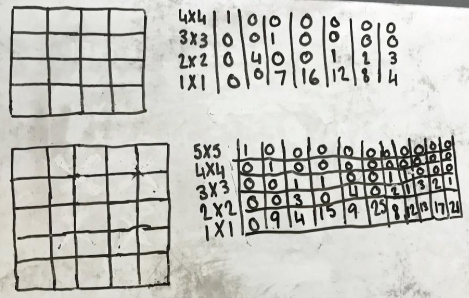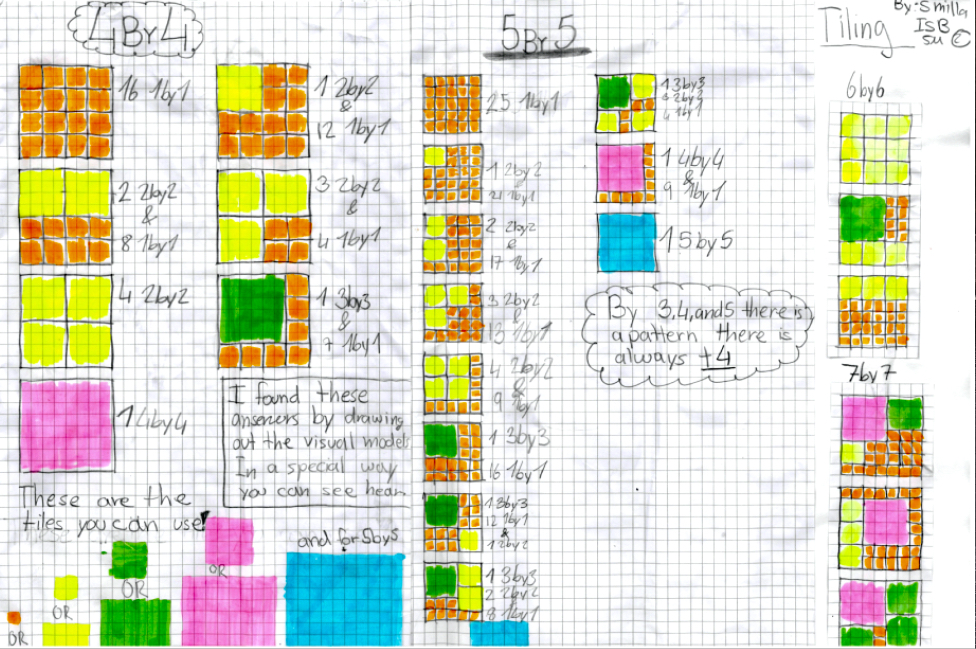Or search by topic
Number and algebra
Geometry and measure
Probability and statistics
Working mathematically
Advanced mathematics
For younger learners
Tiling



- Problem
- Getting Started
- Student Solutions
- Teachers' Resources
Alex, Ayali, Brodie and Keya from Strand on the Green Primary School sent the following:
We decided the easiest way was to start with the biggest tiles that could fit


We agreed there are 7 possibilities for the 4 by 4 square and 11 for the 5 by 5 square. Initially that looks like a sequence adding 4 each time. However there are already 7 possible totals for the 6 by 6 square using the 6x6, 5x5 and 4x4 tiles so there will definitely be more than 15 (but we didn't have time to find them all).
Students from the International School of Brussels sent in their work:

So, both submissions thought that the +4 from one size to another was a particular point of interest and maybe a rule?
Well done both sets of pupils.
Related Collections
You may also like
Pebbles
Place four pebbles on the sand in the form of a square. Keep adding as few pebbles as necessary to double the area. How many extra pebbles are added each time?
It Figures
Suppose we allow ourselves to use three numbers less than 10 and multiply them together. How many different products can you find? How do you know you've got them all?
Bracelets
Investigate the different shaped bracelets you could make from 18 different spherical beads. How do they compare if you use 24 beads?

